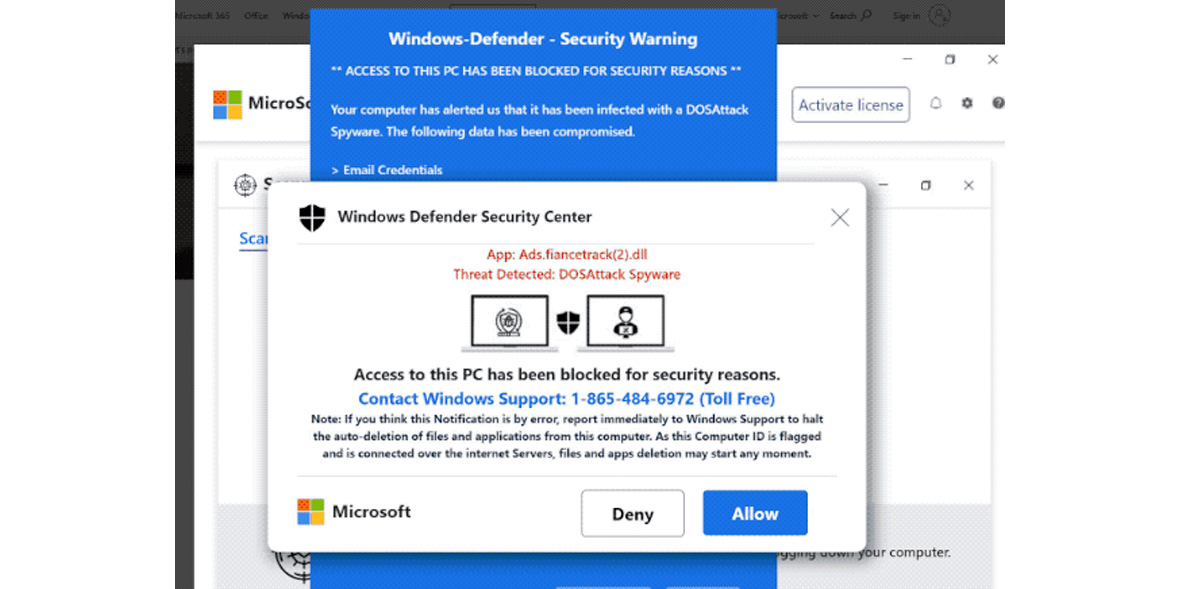
Get tech-confident
Solve your tech issues and get expert buying advice by chatting to our support team as often as you need. From only £4.99 a month, together we’ll show your tech who’s boss.
Find out moreBy clicking a retailer link you consent to third-party cookies that track your onward journey. This enables W? to receive an affiliate commission if you make a purchase, which supports our mission to be the UK's consumer champion.

Scam pop-ups are designed to cause panic, using urgent messages, flashing warnings and fake alerts to grab your attention. Click a link, and you risk handing over personal information — so it’s vital to know what to do when one appears.
But our Tech Support experts have found an effective way to keep your data safe. By adjusting your PC settings, you can force-close unwanted notifications and revoke permissions from potentially harmful sites.
Below, we explain how to banish malicious pop-ups for good and other ways to keep your computer protected.

Solve your tech issues and get expert buying advice by chatting to our support team as often as you need. From only £4.99 a month, together we’ll show your tech who’s boss.
Find out moreAlready a Tech Support member? For 1-to-1 technical advice, including buying advice, go to our Tech Support online booking tool.
Each month, we feature one of the most popular questions answered by our Tech Support team.
'I keep getting pop-ups on my screen claiming to be from McAfee, saying my PC is at risk and that a virus has been detected.
'I don't have McAfee installed on my PC so I'm sure this is a scam. But every time I try to close the pop-up, it still attempts to open a page on my computer. Could you advise me on how to remove it permanently?'
Which? Tech Support member
Charlotte Griffiths, Which? Tech Support team manager, says: 'This isn't from McAfee and we frequently hear from members who have been hit by a scam that puts a pop-up message on their screen. These can be very convincing and usually target Windows users.
'But if you see a pop-up asking you to call a number, even if it looks like it’s from Microsoft, it's a scam.'

Although some pop-up windows can be closed by clicking on the top-right X in the pop-up window, often, this acts as a link. Instead of clicking this, it can be safer to close your entire browser via the Windows Task Manager.
Use the keyboard shortcut Ctrl + Alt + Delete and select Task Manager from the options. Click the Processes tab and select your browser (such as Edge or Chrome) from the list of programs running, then choose End Task.
If you’re asked if you wish to restore tabs when you restart your browser, make sure to press No – if you press yes, the pop-up will return.
We suggest making changes to your browser settings to prevent future pop-ups – the precise steps you need to work through will vary depending on the browser you're using.
You can then turn off browser notifications. Head to the Start menu (or press the Windows key on your keyboard), then select Settings > System > Notifications and actions > Turn off notifications related to an internet browser.
News, deals and stuff the manuals don't tell you. Sign up for our free monthly Tech newsletter
Still using Windows 10? Find out what you need to do in the run-up to when Windows 10 loses security support in October

Solve your tech issues and get expert buying advice by chatting to our support team as often as you need. From only £4.99 a month, together we’ll show your tech who’s boss.
Find out moreWhich? Tech Support can help you keep on top of your home tech. Our experts explain things clearly so you can resolve issues and feel more confident using your devices.
Get unlimited 1-2-1 expert support:
You can join Which? Tech Support.
Additional reporting by Tom Morgan.